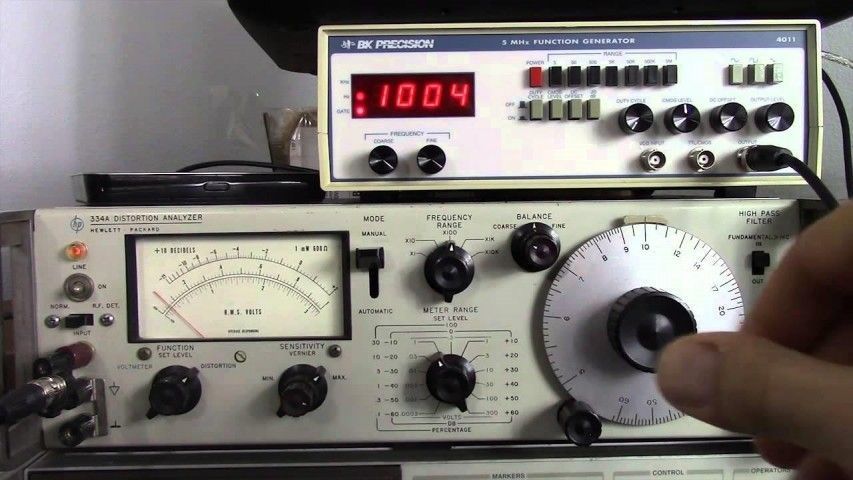IEC 61000-4-13 Standard
Electromagnetic compatibility (EMC) - Part 4-13: Testing and measurement techniques - Harmonics and interharmonics includingmains signalling at a.c. power port, low frequency immunity tests
EMC Test which is the electromagnetic compatibility of a device or system is checked. In the Electromagnetic Compatibility Test (EMC Test) is aimed to operate any electrical and electronic device or system without being affected by and affecting other devices or systems in the environment. The EMC Test is generally divided into two categories as Immunity EMC Test and Emission EMC Test. The test limit values and test methods specified in the standards used in EMC Test applications may vary according to the characteristics of the device or system.
IEC 61000-4-13 standard specifies Harmonics and Inter-Harmonics Includingmains Signaling at the A.C. Power Port, Low Frequency Immunity Tests are one of the Electromagnetic Compatibility (EMC) immunity tests (EMC Tests).
IEC 61000-4-13 standard defines the immunity test methods and range of recommended basictest levels for electrical and electronic equipment with rated current up to 16 A per phase atdisturbance frequencies up to and including 2 kHz (for 50 Hz mains) and 2,4 kHz (for 60 Hzmains) for harmonics and interharmonics on low voltage power networks.
The purpose of the IEC 61000-4-13 standard is to create a common and repeatable basis for evaluating the operating qualities of electrical and electronic devices in case they are exposed to electrical and electronic devices, energy network signaling frequencies and harmonics and interharmonics.
Harmonics and interharmonics includingmains signalling at a.c. power port, low frequency immunity tests:
Harmonics and interharmonics includingmains signalling at a.c. power port, low frequency immunity test is basically the nominal voltage in the energy network. Harmonic currents generated in a small area are generated by the generation, transmission and distribution device. Harmonic currents generated in large areas are also generated by loads in industrial and residential environments.
Devices other than these sources generate low level harmonics individually. However, these low harmonics come together and cause harmonic voltage distortion despite their low level. Sources of interharmonics are generally found in networks. Interharmonics generated in medium and high voltage networks flow towards low voltage networks and harmonics may move in the opposite direction.
Harmonics Test Levels:
|
ODD HARMONICS NON-MULTIPLE OF 3 HARMONICS |
||||
|
Harmonics |
Class 1 |
Class 2 |
Class 3 |
Class X |
|
Test Levels %U1 |
Test Levels %U1 |
Test Levels %U1
|
Test Levels %U1
|
|
|
5 |
4,5 |
9 |
12 |
Open
|
|
7 |
4,5 |
7,5 |
10 |
Open
|
|
11 |
4,5 |
5 |
7 |
Open
|
|
13 |
4 |
4,5 |
7 |
Open
|
|
17 |
3 |
3 |
6 |
Open
|
|
19 |
2 |
2 |
6 |
Open
|
|
23 |
2 |
2 |
6 |
Open
|
|
25 |
2 |
2 |
6 |
Open
|
|
29 |
1,5 |
1,5 |
5 |
Open
|
|
31 |
1,5 |
1,5 |
3 |
Open
|
|
35 |
1,5 |
1,5 |
3 |
Open
|
|
37 |
1,5 |
1,5 |
3 |
Open
|
|
The levels given for class x are open. These levels shall be defined by product committees. |
||||
|
ODD HARMONICS MULTIPLE OF 3 HARMONICS |
||||
|
Harmonics
|
Class 1 |
Class 2 |
Class 3 |
Class X |
|
Test Levels %U1 |
Test Levels %U1 |
Test Levels %U1 |
Test Levels %U1 |
|
|
3 |
4,5 |
8 |
9 |
Open |
|
9 |
2 |
2,5 |
4 |
Open |
|
15 |
No test |
No test |
3 |
Open |
|
21 |
No test |
No test |
2 |
Open |
|
27 |
No test |
No test |
2 |
Open |
|
33 |
No test |
No test |
2 |
Open |
|
39 |
No test |
No test |
2 |
Open |
|
The levels given for class x are open. These levels shall be defined by product committees. |
||||
|
EVEN HARMONICS |
||||
|
Harmonics |
Class 1 |
Class 2 |
Class 3 |
Class X |
|
Test Levels %U1 |
Test Levels %U1 |
Test Levels %U1 |
Test Levels %U1 |
|
|
2 |
3 |
3 |
5 |
Open |
|
4 |
1,5 |
1,5 |
2 |
Open |
|
6 |
No Test
|
No Test
|
1,5 |
Open |
|
8 |
No Test
|
No Test
|
1,5 |
Open |
|
10 |
No Test
|
No Test
|
1,5 |
Open |
|
12-40 |
No Test
|
No Test
|
1,5 |
Open |
|
The levels given for class x are open. These levels shall be defined by product committees. |
||||
|
Frequencies Between Harmonic Frequencies (for 50 Hz mains) |
||||
|
Frequency Range (Hz) |
Class 1 |
Class 2 |
Class 3 |
Class X |
|
Test Levels %U1 |
Test Levels %U1 |
Test Levels %U1 |
Test Levels %U1 |
|
|
16-100 |
No Test
|
2,5 |
4 |
Open |
|
100-500 |
No Test
|
5 |
9 |
Open |
|
500-750 |
No Test
|
3,5 |
5 |
Open |
|
750-1000 |
No Test
|
2 |
3 |
Open |
|
1000-2000 |
No Test
|
1,5 |
2 |
Open |
|
The levels given for class x are open. These levels shall be defined by product committees. |
||||
|
Frequencies Between Harmonic Frequencies (for 60 Hz mains) |
||||
|
Frequency Range (Hz) |
Class 1 |
Class 2 |
Class 3 |
Class X |
|
Test Levels %U1 |
Test Levels %U1 |
Test Levels %U1 |
Test Levels %U1 |
|
|
60-120 |
No Test
|
2,5 |
4 |
Open |
|
120-600 |
No Test
|
5 |
9 |
Open |
|
600-900 |
No Test
|
3,5 |
5 |
Open |
|
900-1200 |
No Test
|
2 |
3 |
Open |
|
1200-2400 |
No Test
|
1,5 |
2 |
Open |
|
The levels given for class x are open. These levels shall be defined by product committees. |
||||
In order for an external device used during the test not to be affected by harmonic and interharmonic distortions, the test generator must have sufficient filtering feature. The test levels given above are applied between the ends of the electrical and electronic equipment connected as single or 3-phase operating as specified in the relevant product standard.

